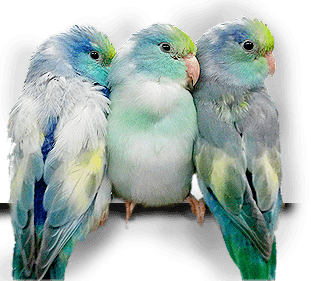Techniques To Breeding Healthy Parrotlets
Many people who discover parrotlets and become so obsessed with their delightful personalities that they decide to breed them. Parrotlets are not easy to breed. The parrotlets species needs to be one year old in order to be able to breed. They do not need a large flight cage, we use 14 x 14 x 14 breeding cages. Only one pair to one cage. Parrotlets are aggressive and territorial and may attack or kill other parrotlets if housed together so use caution and introduce them to each other slowly. Breeding parrotlets require a diet much higher in fat and protein than other non-breeders. Parrotlets breed better when there is more than one pair in the aviary, but they must not be able to see each other only hear one another. Most new parents can run into problems, such as baby neglect, not sitting on the eggs long enough, even not feeding the babies. It may take 2 to 3 clutches for the parents to learn how to be a good parent to their offspring so careful observation must be exercised. Even if the first clutch dies the parent should do a wonderful job with the second and third clutch so have patience and do not be discouraged. Give them an undisturbed area and they will usually produce healthy babies. In a good environment, they may produce as much as 3 to 4 clutches per year.
Housing Breeding Pairs
Most breeders will use a cage size of 18 x 24 x 24” which is enough for them to breed successfully in a cage of these dimensions. At Xtreem Parrotlets, we have great success in breeding our birds in cages with the dimensions of 14 x 14 x 14, with two perches in the cage. The perches must be sturdily attached to the cage as infertility can come from wobbly perches. Natural wood perches should be used so the bird can exercise its feet. Food and water should be placed in an area where they are not spoiled by droppings. Place food into open dishes because parrotlets often will not stick their heads inside dishes with hoods and could starve. Water should be placed in a glass tube fountain. Breeding pairs will need to have nest boxes that are 6 x 10 x 7”, which should be hung on the outside of the cage and filled with two or 3 inches of unscented nesting material. Nest boxes should be placed on the front of the cage is so one of the birds look out they always see the inside of their cage. Some birds are fond of throwing the nesting material out of the box, so be sure to replace it. Baby parrotlets can often develop many disabilities such as orthopedic problems if left on the bare floor of the box. Sometimes birds will accidentally bury their eggs in the shaving and lose them, we recommend you check each nest box every two days to make sure everything is in order. Also, it will teach the parrotlets to get used to you as they see you frequently going in and out of their box. As previously mentioned, parrotlets breed best one there is more than one pair in the aviary, and they can hear but not see each other. You will need to put a divider between the cages to keep them from seeing each other. This will keep the birds from stress or attacking one another in a jealous rage, possibly giving it injury or even worse death. Be careful hand fed birds have no fear of people and will inflict a painful bite if given a chance. Parrotlets have a much-deserved reputation for not letting go one stay latch on. When removing babies, a piece of cardboard can be used to hold the hand back. The female will not usually leave the box the way males do. Females have been known to attack babies when they feel threatened, so use the utmost caution.
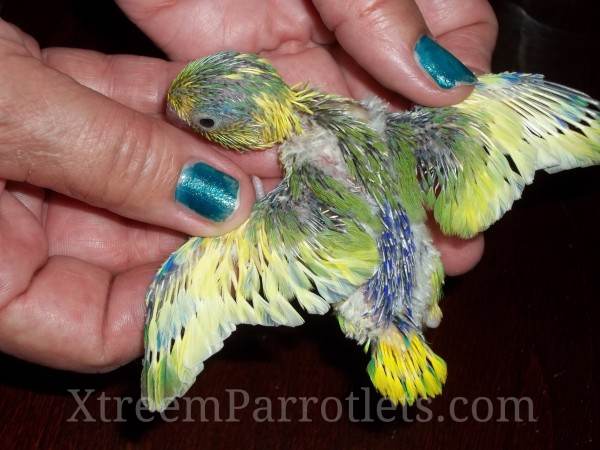 Baby Turquoise Pied Parrotlet Still Spoon Feeding Not Yet Weaned
Baby Turquoise Pied Parrotlet Still Spoon Feeding Not Yet Weaned
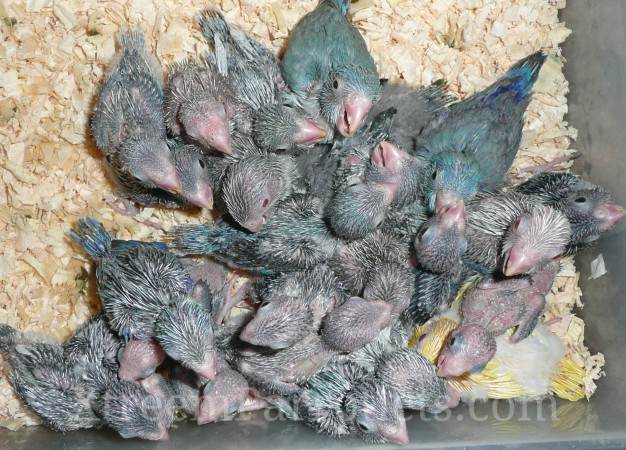 Group of Mixed Parrotlets 1 Week After Spoon Feeding
Group of Mixed Parrotlets 1 Week After Spoon Feeding
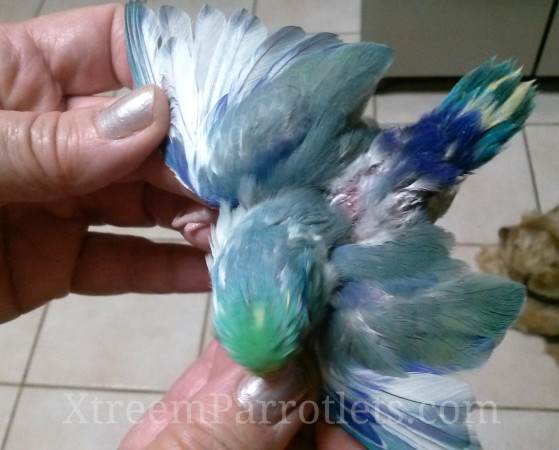 Baby Turquoise Pied 3 Weeks After Spoon Feeding
Baby Turquoise Pied 3 Weeks After Spoon Feeding
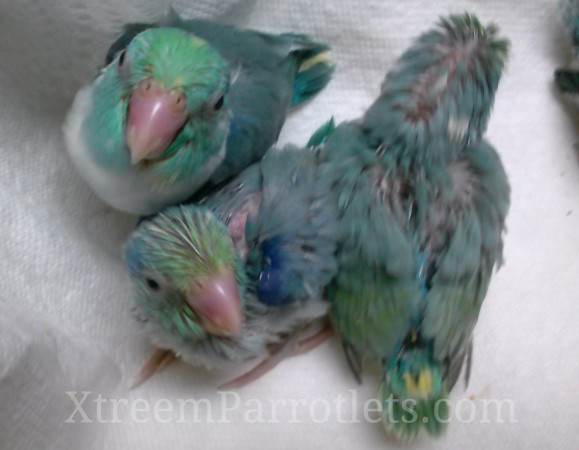 Baby Turquoise Pied From Large Group After 3 Weeks of Spoon Feeding
Baby Turquoise Pied From Large Group After 3 Weeks of Spoon Feeding
